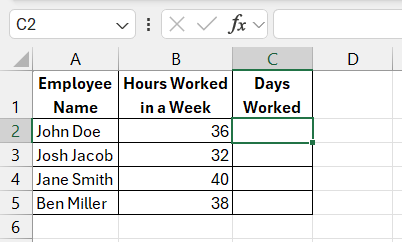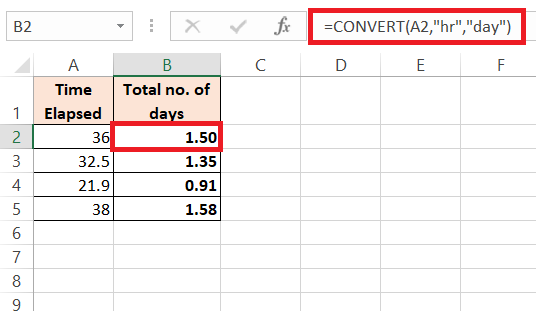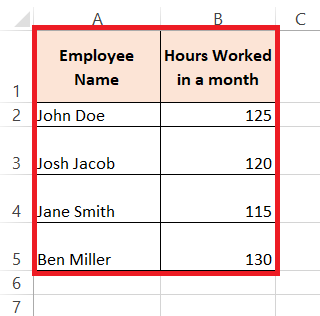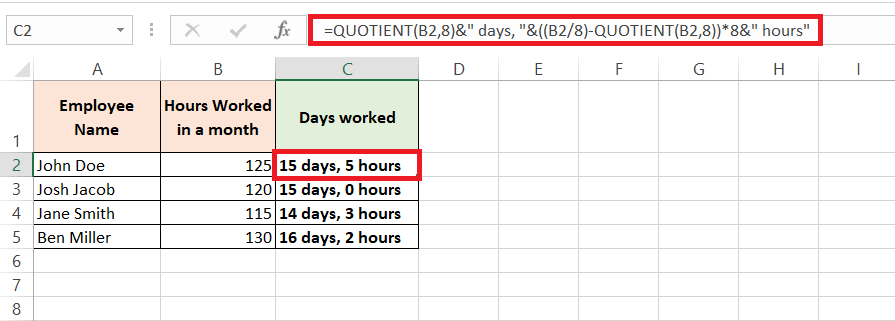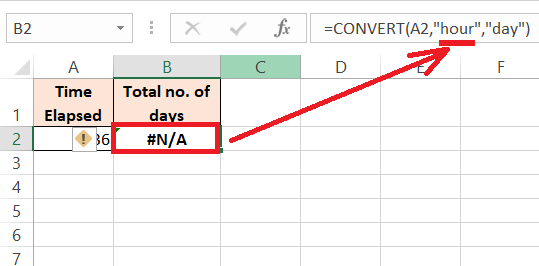Converting hours to days in Excel can simplify complex time data and enhance clarity in your projects and time tracking. This guide will walk you through the process, utilizing Excel’s powerful functions and straightforward formulas to make the conversion easy and efficient. Whether you’re managing work hours, project timelines, or personal schedules, mastering this skill will help you gain better insights and streamline your data analysis. Let’s dive into the steps to effortlessly transform hrs into days in Excel.
Key Takeaways:
- Converting hours to days in Excel simplifies time data and enhances clarity in project management and time tracking.
- Excel’s powerful functions and straightforward formulas make time conversion easy and efficient.
- Understanding and utilizing Excel’s date and time functions are crucial for accurate time data management.
- Converting hours to days provides better insights, streamlines payroll processes, and improves communication of timelines.
- Using simple division and formatting techniques in Excel can transform hours into a day-hour format for easier interpretation.
Introduction
The Time Conversion Challenge in Excel
When you are dealing with time data in Excel, it can sometimes feel like trying to solve a puzzle. Converting hours into days might seem daunting at first glance, but fear not! With a few clever tricks and an understanding of Excel’s functionality, I can navigate through the intricacies of time conversion with ease.
Unveiling the Magic of Excel for Hrs to Days
Imagine waving a magic wand and transforming a lengthy list of hours into days. With Excel, this kind of sorcery is not only possible, it’s simple! By utilizing certain functions and formulas, I can convert hours to 8-hour days swiftly, accurately, and without breaking a sweat. This is especially handy when I’m juggling projects, evaluating employee timesheets, or organizing personal time tracking.
Table of Contents
Key Concepts of Time Management in Excel
Understanding Excel’s Date and Time Functions
Excel’s date and time functions are like hidden gems waiting to be discovered. They work behind the scenes to let me assemble, compute, and convert time and date data according to my needs. Whether I’m looking to tease apart a timestamp into separate date and time components or merge individual time units into a coherent format, Excel’s got my back.
These functions respect the 24-hour clock format and understand that a day is made up of 24 hours—a fundamental concept when I’m shifting between different units of time.
Why Convert Hrs to Days?
Converting hours to days isn’t just about making numbers look different; it’s about context and clarity. When I break down my data into days and hours, it becomes far easier to grasp the bigger picture—like how many workdays a project spans, or how much leave an employee has accrued.
This conversion can also streamline payroll processes, simplify scheduling, and make it easier to communicate timelines to team members and stakeholders who are accustomed to thinking in terms of days rather than hours.
Mastering Time Conversion Formulas
The Role of TIME Function in Conversion
The TIME function in Excel is a versatile tool that works discretely yet powerfully to meld together hours, minutes, and seconds into a proper time format. When I’m venturing into the realm of conversion, the TIME function might seem like a secondary character, but it actually plays a vital role.
It helps standardize the time data before I convert it into days, ensuring the transition is smooth and error-free. In essence, TIME ensures that each time unit is in its right place, paving the way for an accurate conversion from hours to days.
Using Division and Formatting to Transform Hours into Days
To transform hours into days, I don’t need complex alchemy; all it takes is basic division and a touch of formatting finesse. By using the CONVERT function, I’m leveraging Excel’s straightforward math functions to do the heavy lifting.
Use Formula: =CONVERT(A2,”hr”,”day”)
After the division is done, formatting swoops in to ensure my data is showcased in a day-hour format that’s easy to interpret at a glance. Remember, it’s not just the calculations but also the presentation that makes the data meaningful.
Step-by-Step Tutorial: Converting Hours to Days
Setting Up Your Data for Conversion
Before diving into the numeric ballet of conversion, I’ll ensure my data is prepped and primed. I start by organizing my hours in a clear, accessible way—preferably in a single column. This significantly eases the conversion process.
I’ll make sure any irrelevant data is filtered out and that the hours are in a format that Excel recognizes as time. Consistency is key here; I’ll ensure my time data is uniform across the board, avoiding any mix-ups between different time formats.
Implementing the Conversion Process
Now, with my data in perfect alignment, it’s time to begin the transformation. I’ll create a new column labeled ‘Days Worked,’ and start with the cell that corresponds to the first row of hours I want to convert. I’ll enter the formula, =QUOTIENT(B2,8)&" days, "&((B2/8)-QUOTIENT(B2,8))*8&" hours"given a day consists of 8 working hours. Then, I’ll drag down the fill handle to copy this formula to the remaining cells.
This simple technique unveils my hours metamorphosed into days, right before my eyes.
Real-World Examples and Practical Applications
Case Study: Employee Leave Days–Hours Calculation
Let’s put this into practice with a case study on employee leave days-hour calculation—an area where precision and clarity really matter. Here, each employee accumulates leave in hours, which they then ‘spend’ on taking time off.
Using the days-hours conversion, human resources can easily determine how much leave has been used and what remains, displaying it in an intuitive day-hour format. This approach not only simplifies leave tracking but also enhances transparency and understanding among employees regarding their benefits.
From Project Timelines to Personal Planning: Other Uses of Conversion
Conversion from hours to days isn’t just workplace wizardry; it transcends into various applications like project management and personal planning. Imagine efficiently mapping out project timelines, where long stretches of hours are more digestible when presented in days.
Or consider the utility in personal planning—tracking study hours or workout sessions becomes more tangible when converted into days. This flexibility is what makes Excel a universal tool, adapting to professional and personal contexts with ease.
Advanced Tips and Common Mistakes
Avoiding Pitfalls in Hours to Days Conversion
Converting hours to minutes in Excel feels straightforward, but it’s not without potential pitfalls.
A common misstep is forgetting to account for daylight-saving time changes if I’m working with actual dates and times. Also, I’ll ensure I don’t mix up text-formatted times with actual time values—Excel treats these differently. I’ll stay vigilant for rounding errors too; they can sneak into conversions and skew the results.
By double-checking data types and carefully applying formulas, I can sidestep these common issues and ensure my time conversion is accurate and reliable.
Quick Fixes for Typical Errors
If I find myself in a bind with errors post-conversion, there are quick fixes to set things right. For ‘#DIV/0!’ errors, I’ll confirm there are no zero values I’m attempting to divide by—this signals Excel is attempting an impossible calculation.
‘#VALUE!’ errors often crop up when there’s a mix of text and numerical data. I’ll scrutinize my cells to make sure all data is numerical where it should be. And if I’m faced with format issues, where days are showing up as decimals, I’ll double-check my cell format settings. Excel has a solution at the ready; I just need to know where to look.
FAQ Section
How to convert hours to days in Excel?
To convert hours to days in Excel, divide the hours by 24 and format the cell to show the result as days, or input =A2/24, assuming A2 contains the hour value.
How to calculate days with hours in Excel?
In Excel, to calculate days with hours, use the INT function for whole days (=INT(A2/24)) and the MOD function for the remaining hours (=MOD(A2, 24)). Combine both to show days and hours (=INT(A2/24) & " days, " & MOD(A2, 24) & " hours").
What is the generic formula for converting hours to days in Excel?
The generic formula for converting hours to days in Excel is =A2/24, where A2 is the cell with the hours to be converted. Format the result cell to display days for a complete conversion.
How do I convert a number that exceeds 31 days to a day-hour format?
For numbers exceeding 31 days, create a day-hour format by using =INT(A2/24) & " days " & MOD(A2, 24) & " hours". This separates the days from hours even when the total hours surpass the hours in a month.
How does Excel convert days and time in numbers?
Excel converts days and times into numbers by treating each day as a whole number and fractional parts of a day as decimal values based on the time. For instance, 6:00 AM is 0.25 and 12:00 PM is 0.5 as Excel starts its daily count from midnight.
John Michaloudis is a former accountant and finance analyst at General Electric, a Microsoft MVP since 2020, an Amazon #1 bestselling author of 4 Microsoft Excel books and teacher of Microsoft Excel & Office over at his flagship MyExcelOnline Academy Online Course.

